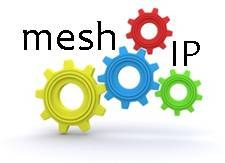 High-performance computing (HPC) is no longer exclusive to large companies and governments with substantial scientific budgets. Why? The economics of HPC cloud computing bring these capabilities within reach of nearly any business. However, infrastructure and operations (I&O) professionals must realise that the level of ROI varies based on application design, behaviour and use case. Cloud economics let companies pay for capacity when and only when it is utilised, without requiring any upfront investment – essentially eliminating the barrier to entry to HPC.
High-performance computing (HPC) is no longer exclusive to large companies and governments with substantial scientific budgets. Why? The economics of HPC cloud computing bring these capabilities within reach of nearly any business. However, infrastructure and operations (I&O) professionals must realise that the level of ROI varies based on application design, behaviour and use case. Cloud economics let companies pay for capacity when and only when it is utilised, without requiring any upfront investment – essentially eliminating the barrier to entry to HPC.
In most HPC projects, the more compute power you can throw at a problem, the faster the result can be attained. As a result, traditional HPC deployments require substantial upfront and ongoing investments. Cloud computing environments, however, make huge quantities of compute capacity available to you at affordable per-hour rates. And its economic model encourages use of more resources per hour than fewer resources over more hours – a direct hit on the needs of HPC workloads.
Do the economics add up?
Not all HPC workloads can activate cloud economics. Through our examination of more than 30 use cases of enterprise HPC cloud computing deployments and countless inquiries with Forrester clients, it is clear that the ROI of cloud for HPC is heavily dependent on how your application scales and how rapidly you can enter and leave the cloud.
ROI will be heavily influenced by these two application characteristics:
• Transiency: how long will you need the cloud? One of the key differentiators of infrastructure as a service (IaaS) and platform as a service (PaaS) cloud computing is that its cost model replaces long-term contracts with pay-per-use costing. If you plan to deploy an application that is only needed for a short period, put it on the cloud, because once the application’s life has ended or its run has completed, it stops paying for the infrastructure supporting it. But if you stay in the cloud too long, it will cost you more than traditional hosting options. Like other transient services, such as hotel rooms or rental cars, the per-hour rate of cloud platforms is higher for full use throughout the month because it is priced to encourage you to leave.
• Elasticity: the more the application scales, the better the ROI. The power of cloud economics pays off best with applications can scale out massively and then scale back down to zero. This means workloads that use a lot of parallel processing where work elements can operate independently of each other yet all be working on parts of a big problem fit best. Not all HPC workloads function this way and therefore cannot cleanly take advantage of IaaS cloud environments. You might be able to rearchitect your HPC applications so they behave this way. The key is to get the application to scale out via load-balancing or grid architectures and be as modular as possible to maximise scaling elasticity.
Not every HPC project is cloud-appropriate
Cloud computing is not a fit for all HPC workloads. Some are tied to unique hardware architectures or use cluster technologies that require their own hardware or fixed configurations. Others are very sensitive to latency or cannot scale out because of architectural design.
For these reasons, cloud platforms are not the end game, replacing all IT infrastructure that has come before them: they are simply new deployment options that bring economics suited to a subset of use cases. In other words, think of IaaS as a new deployment instrument in the IT toolbox (see figure). To cost-optimise investments, I&O professionals should think about their infrastructure options as three buckets and assign applications based on their resource needs profiles:
• Applications that require dedicated physical resources justify capital expenditures. An application may require its own dedicated hardware because of application design, hardware dependencies such as needing graphics processing units, being sensitive to configuration changes, or demanding dedicated, high-performance networking. Applications with these dependencies may warrant a hardware capital investment (or a software redesign).
• Applications that do not consume the full capacity of hardware should be virtualised. Kind of a no-brainer in 2010, but have you taken this strategy to its full conclusion with HPC workloads? Keep pushing this strategy, because maximising capital asset utilisation accelerates its ROI. If you have outsourced these applications, make sure the resource consumption pattern and lifespan of these applications justify the 12-month minimum contract of traditional hosting.
• Applications whose architectures are elastic should be considered for the cloud. It behoves you to cost-optimise your HPC application by placing it on a pay-per-use platform if: 1) it fits into a virtual machine environment or can be deployed atop an abstracted middleware platform; 2) it can scale out dynamically; and 3) it has loose coupling between compute nodes and storage (nodes act independently or are tolerant of high network latencies).
- The Customer Edge Drives the Need for NaaS - June 25, 2023
- Blockchain Evolves And Secures - January 13, 2019
- Bessemer Ventures’ 2018 Cloud Computing Trends - February 25, 2018




